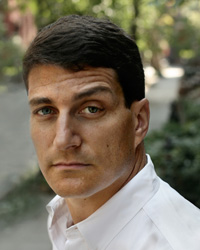About the Book
For half a century, the case of Isaiah Oggins, an American brutally murdered in 1947 on Stalin's orders, remained sealed in the secret files of the KGB and the FBI -- a footnote buried in the rubble of the Cold War. In 1992, it surfaced only briefly, when Boris Yeltsin handed over a dossier to the White House. But the real story of what happened to Isaiah "Cy" Oggins, one of the first Americans to spy for the Soviet Union, remained an elusive mystery, even to his own family.
For Andrew Meier the hunt began in 2000. While researching his acclaimed portrait of post-Soviet Russia, he heard vague rumors from elderly camp survivors of an American lost to Stalin's gulag. Meier could not know his quest would take eight years and that the story of this unknown spy, an early compatriot of Whittaker Chambers and Sidney Hook, was so exceptional that it could be mistaken for a thriller.
But fiction this is not. As Meier writes about the greatest unknown American spy before the Cold War, "this is an improbable, but true, tale.” Over time, Meier’s discoveries began to accrete, the research filling half an apartment, with declassified dossiers from archives around the world, and above all, the discovery of a surviving son had last seen his father in pre-war Paris.
The Lost Spy charts Cy Oggins’ evolution, from his birth in 1898 in a Connecticut mill-town, to his graduation from Columbia, to recruitment by Soviet operatives. Oggins embodied the left-leaning generation who came of age during World War I: a brilliant young man of immigrant Jewish roots, who, when confronted by America’s poverty and labor strife, could not sit idle. When Oggins fell in love with Nerma Berman, a Russian-born firebrand, the turn was final.
Enlisting in Stalin's secret service, the couple embarked on their perilous odyssey in 1928.
- In Berlin, Oggins posed as a wealthy antiquarian dealer to run a strategic safe house.
- In Paris, he spied on the surviving Romanovs.
- In Manchuria, Oggins served behind enemy lines, spying on the Japanese occupiers and their puppet emperor, Pu-Yi, “the Last Emperor.”
By the 1930s, even if Cy and his wife Nerma dared to change course, they were trapped. For all his devotion to that "ideological delirium that possessed the planet," he too fell victim to Stalin’s merciless paranoia. After more than 8 years in the gulag, Oggins was “liquidated,” murdered by lethal injection in the KGB’s secret laboratory, his family not even informed. To this day, Oggins’s heirs do not where his remains lie.
The Lost Spy is a sterling example of investigative journalism, a luminous tale that will rewrite the history of Soviet intelligence in the West.
About the Author
 Andrew Meier, a former Moscow correspondent for Time Magazine, is the author of Black Earth: A Journey Through Russia After the Fall, which was named a Book of the Year by The Economist, The Times Literary Supplement, and Publishers Weekly.
Andrew Meier, a former Moscow correspondent for Time Magazine, is the author of Black Earth: A Journey Through Russia After the Fall, which was named a Book of the Year by The Economist, The Times Literary Supplement, and Publishers Weekly.
A graduate of Wesleyan and Oxford universities, Meier has reported from Russia and the former USSR for two decades. He is the recipient of fellowships from the National Endowment for the Humanities, the Woodrow Wilson International Center for Scholars, and the Alicia Patterson Foundation. Most recently, Meier was a fellow at the Dorothy and Lewis B. Cullman Center for Scholars & Writers at the New York Public Library.
Meier has contributed to Harper’s, the Los Angeles Times, National Geographic, the New Republic, the New York Times Magazine, the Washington Post, among many other U.S. and international publications. A frequent commentator on the BBC, CNN, and NPR, he has also reported for PBS documentaries.
A writer-in-residence at the New School University, Meier lives in New York City.
